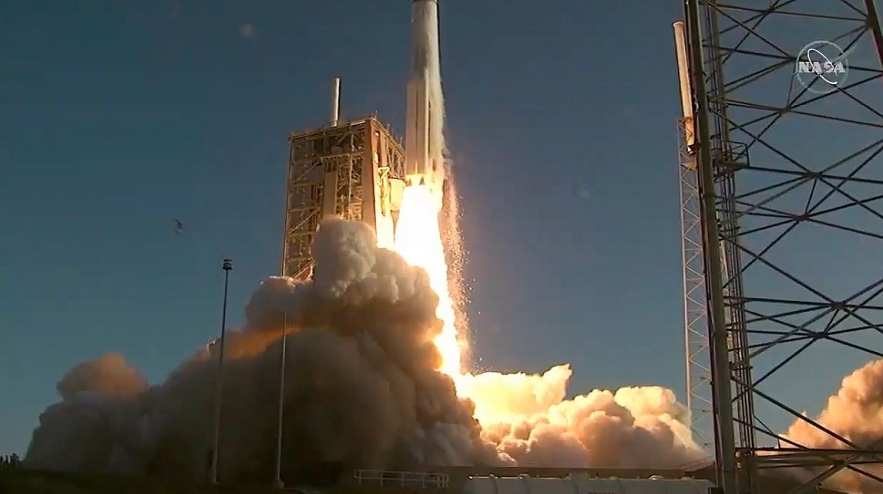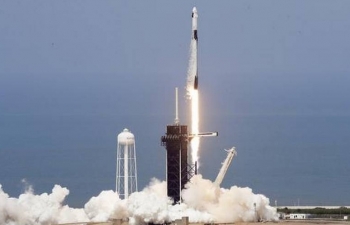NASA sent a rover on a journey to Mars to hunt down signs of ancient life
| Prominent Vietnamese student won NASA internship | |
| SpaceX successfully launches NASA astronauts into orbit | |
| NASA unveils possible evidence of parallel universe where rules of physics go backward |
 |
| NASA's boldest-ever Mars rover is on its way to Mars. Photo: NASA |
NASA launched a new rover, a car-size robotic explorer named Perseverance, to Mars on an ambitious mission to scour the planet for evidence of ancient life.
The rover, which launched from Florida's Cape Canaveral Air Force Station into orbit in 30 July at 7:50 a.m. ET, is designed to study the geology and climate of Mars, kicking off a nearly seven-month cruise to the Red Planet.
After touching down inside the 28-mile-wide (45 kilometers) Jezero Crater in February 2021, Perseverance will do things no Mars rover has ever done — hunt for signs of life, collect samples for future return to Earth and deploy a miniature helicopter, to name a few.
The 2,260-lb rover is equipped with a range of sensors to help it search for signs of past micro organic life on Mars, as well as study the planet’s amtospheric and geological makeup. It also carries with it a helicopter drone called Ingenuity, which will seek to become the first ever vehicle to take-off and fly within the Mars atmosphere.
Perseverance is a big upgrade over prior rovers in a number of ways. It can cover way more ground operating autonomously per day than any of its predecessors, for instance, which should help it conduct more science than ever before. It’s also equipped with 19 cameras to provide a full, detailed and high-quality view of its surroundings back to Earth.
The rover is also designed to prime the pump for future human Mars exploration (and long-duration human Moon missions), with experiments on board like MOXIE, an instrument that will create oxygen from the CO2 found in Mars’ atmosphere, and will set the stage for a washing machine-sized version to be developed in future that will essentially act as a self-sustaining Mars power source.
The Perseverance rover is also unique in that it is preparing for a return trip for some of the samples it collects: The plan is to ultimately combine the efforts of NASA and the European Space Agency to retrieve samples of Martian soil that Perseverance leaves behind in collection canisters using a future spacecraft and retrieval lander, so that they can be studied directly back here on Earth.
 | Japanese firms want to employ Vietnamese IT engineers: VINASA Over 80 percent of Japanese firms said they are willing to receive foreign workers, and 95 percent of them are interested in Vietnamese IT engineers, ... |
 | Vietnamese professor developed NASA-funded rainfall observation app Vietnamese Professor Nguyen Dinh Phu introduced a mobile app that provides real-time rainfall information via user-contributed data last November. |
 | Dien Bien television officially broadcast via Vinasat 1 satellite Dien Bien provincial People’s Committee has launched the Dien Bien Television Channel, broadcast via Vinasat 1, after nearly six months of pilot broadcast. |
Recommended
 World
World
Thailand Positions Itself As a Global Wellness Destination
 World
World
Indonesia Accelerates Procedures to Join OECD
 World
World
South Korea elects Lee Jae-myung president
 World
World
22nd Shangri-La Dialogue: Japan, Philippines boost defence cooperation
 World
World
Pakistan NCRC report explores emerging child rights issues
 World
World
"India has right to defend herself against terror," says German Foreign Minister, endorses Op Sindoor
 World
World
‘We stand with India’: Japan, UAE back New Delhi over its global outreach against terror
 World
World



